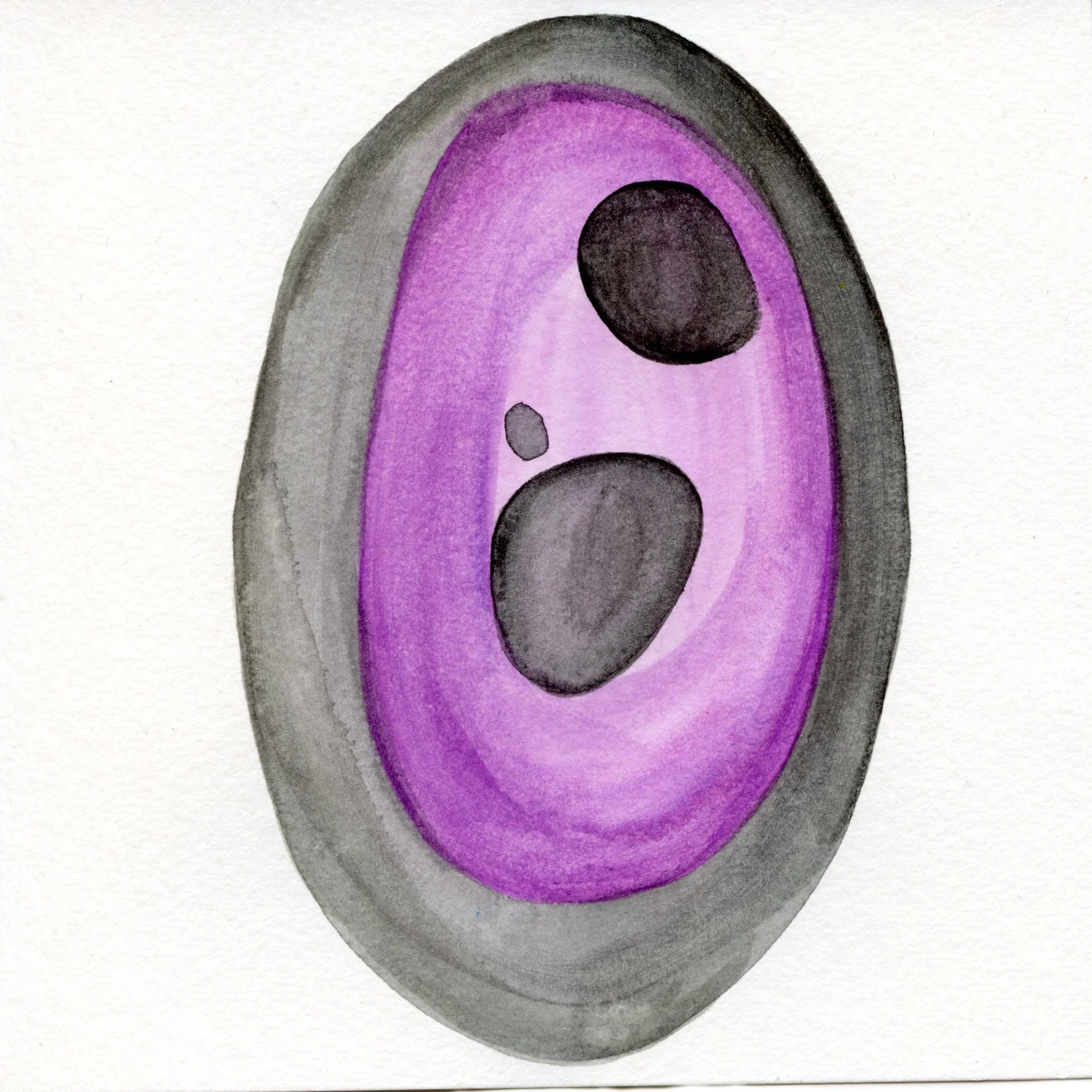The phrase “First 100 Days” entered the political lexicon in 1933, when President Franklin D. Roosevelt passed a whirlwind of 15 major pieces of legislation aimed at pulling the United States out of the Great Depression. It came to signify urgency, vision, and the promise of meaningful change. The benchmark has since become shorthand for how a president sets the tone for their term — what they value, what they prioritize, and what they’re willing to destroy to get there.
In his second term, Donald Trump took office on January 20, 2025, and turned the spirit of the “First 100 Days” inside out. Rather than constructing relief, he orchestrates rollback. Rather than fortifying essential services, he dismantles protections. Rather than expanding equality, he restricts access to reproductive care and undermines women’s health in the process.
The Second First 100 Days is a series of 100 gouache-painted vulvas — one for each day of Trump’s recalibrated, Project 2025-backed administration’s first 100 days. An administration that reduces women to their capacity for childbirth and their role in catering to the ambitions of white men in power. Shortly after the inauguration, women’s health information began disappearing from government websites — pages on reproductive rights, contraception, and breast cancer vanished from agencies like the Department of Health and Human Services. Offices created to serve women’s needs, like the White House Council on Women and Girls, were dissolved entirely. Along with these removals, the names of women who led, advised, or shaped these initiatives were erased from directories and public records — as if their roles, their labor, their very presence in government, let alone this country, no longer mattered.
Inspired by Toni Morrison’s declaration that “this is precisely the time when artists go to work,” The Second First 100 Days was born. Each painting is an act of reclamation — a counter to the political and cultural forces determined to erase bodily autonomy, strip away reproductive rights, and reframe womanhood as something to be controlled rather than honored. While policy seeks to flatten us into statistics or soundbites, this work insists on individuality, variation, and presence. No two vulvas are the same. None should be. And yet all deserve the same rights to healthcare and bodily autonomy that men are afforded in the United States.
Painted daily in real time, this project mirrors both the relentlessness of political erosion and the quiet, stubborn resistance of creation. As rights are taken away behind closed doors and headlines blur into each other, each vulva remains a singular form — soft or sharp, exposed or shy, sacred or profane — a record of what we still have, what we’ve already lost, that we cannot be erased, and what we will not let go of without a fight.
This is protest as ritual. This is repetition as resistance. This is the documentation of refusing to be diminished.
¹ Sunlight Foundation, “Trump Administration Changes to Federal Websites,” Web Integrity Project, 2017–2020, https://sunlightfoundation.com/web-integrity-project/.
² U.S. Department of Health and Human Services, Office on Women’s Health, archived pages via the Internet Archive (Wayback Machine), showing removal of breast cancer and reproductive health content between 2017–2018. See: https://web.archive.org/web/*/https://womenshealth.gov.
³ The White House, “Council on Women and Girls,” archived Obama-era page, https://obamawhitehouse.archives.gov/administration/eop/cwg. Note: The Council was disbanded during the Trump administration and not reinstated.
⁴ Environmental Protection Agency, “Scientific Integrity and Advisory Board Changes,” tracked by the Union of Concerned Scientists and news reports. See: https://ucsusa.org/resources/sidelining-science-epa.
⁵ Department of Labor, Women’s Bureau, observed reductions in web presence and staff visibility, 2017–2020. Partial coverage via: https://www.dol.gov/agencies/wb and site-change tracking from the Web Integrity Project.



































































































